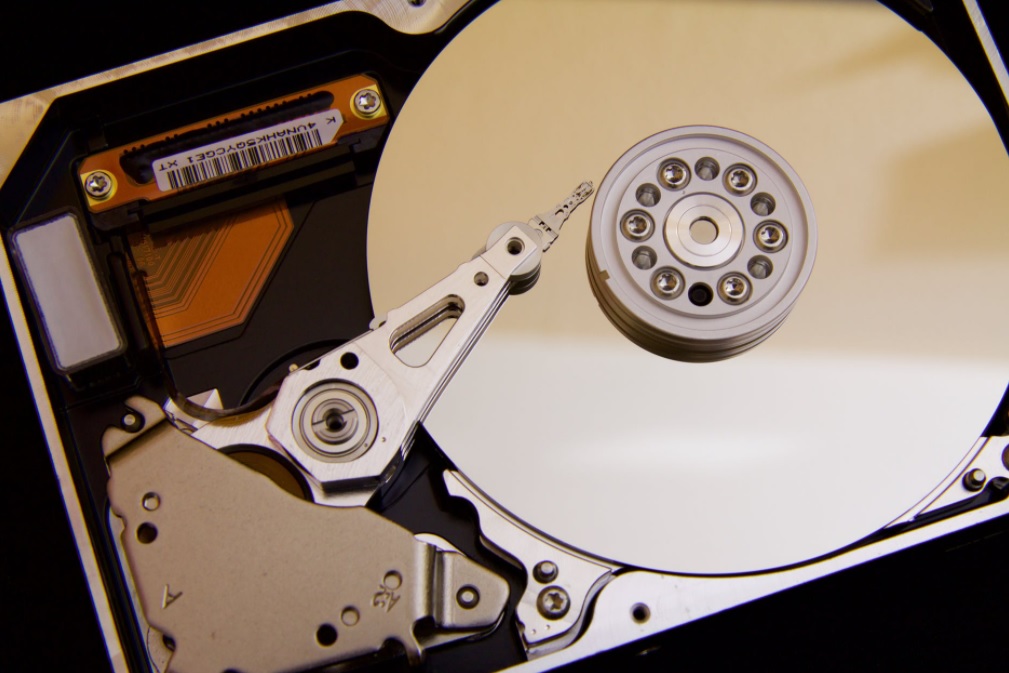
When people talk about data storage solutions for a PC, they talk of the three main drives, SATA, solid-state drives, and hard disk drives. Physically hard drives are metal plates with a magnetic surface that store the bulk of your data. You can put everything into them until the storage space allows.
SATA vs HDD And SDD
The original hard drives, the hard disk drives work using a read/write arm on top of a spinning disc. You can consider it as a tiny, shiny vinyl record player but are large, bulky, and prone to problems.
Hard drives usually get fragmented over time and that is one of the major drawbacks. This happens when the disc becomes overcrowded with data that was not written on to the drive sequentially. While files are transferred to the hard drive, they easily take up the storage space. What happens over time is, since files of several sizes fit in the space, the sequence gets disturbed.
HDDs can access files that are not concentrated in one place only but consume a little more time. When they access such files, the drives spin for a longer period of time. This the reason why there is a risk of hard disks getting fragmented, and need to be “de-fragmented” or “de-fragged” regularly. Files need to be well organized and sorted time and again. However, with SSD – solid-state drives, this is not a problem.
SSDs store memory in a flash drive, making it convenient. It is mostly like a RAM with the exception of data that does not vanish when the device is turned off. It is, however, great that hard disk storage can be lightning-fast while fitting onto an even smaller device. This is the reason why laptops are getting smaller and lighter over time. The need for bulky hard drives has been cut off.
SATA vs HDD & HDD vs SSD
SATA drives is the third option for hard drives that are less expensive and also more common than SSDs. But, they are slower in comparison to SSD when it comes to boot up and data retrieval. But if there is a requirement of huge-huge space then SATA should be your choice. There is a slight chance of malfunction due to the moving parts on a SATA.
HDDs are quite similar to SATA if you consider the functionality.
Overall, comparing a SATA to SSD is the same as comparing SSD to HDD. Rest, you know the relations. So, let us get to the detailed comparison of reliability, speed, and lifespan.
Reliability
SSDs are considered to be more reliable than HDDs, that is obvious. SSDs are solid-state and hence have no moving parts, so there is very little chance of any malfunction. SSD will always be over HDD incase of reliability.
Speed
SSDs are faster, and there is no question about it. The read and write process works without the requirement of a spinning disc. Well, there is a lot said about this already and evidently, systems using SSDs are way faster than HDDs. You get every work done swiftly.
Lifespan
SSDs have won the game in the early categories, but they have been left behind in terms of lifespan. While SSDs focus on working by forcing electrons through a gate in order to change their state. The gradual process leads to performance degradation quickly. On the other hand, HDDs might be bulky and need to be defragmented regularly, but can go on for a longer time.
So, in this article, you got a general idea of the various stypes of data storage solutions. The best option for you is to be decided by you as per your needs. Choose an HDD for large storage space and SSDs for higher reliability and flexibility quotient. However, most people rely on both for a different purpose. So, get the best for your system and get your job done conveniently.

